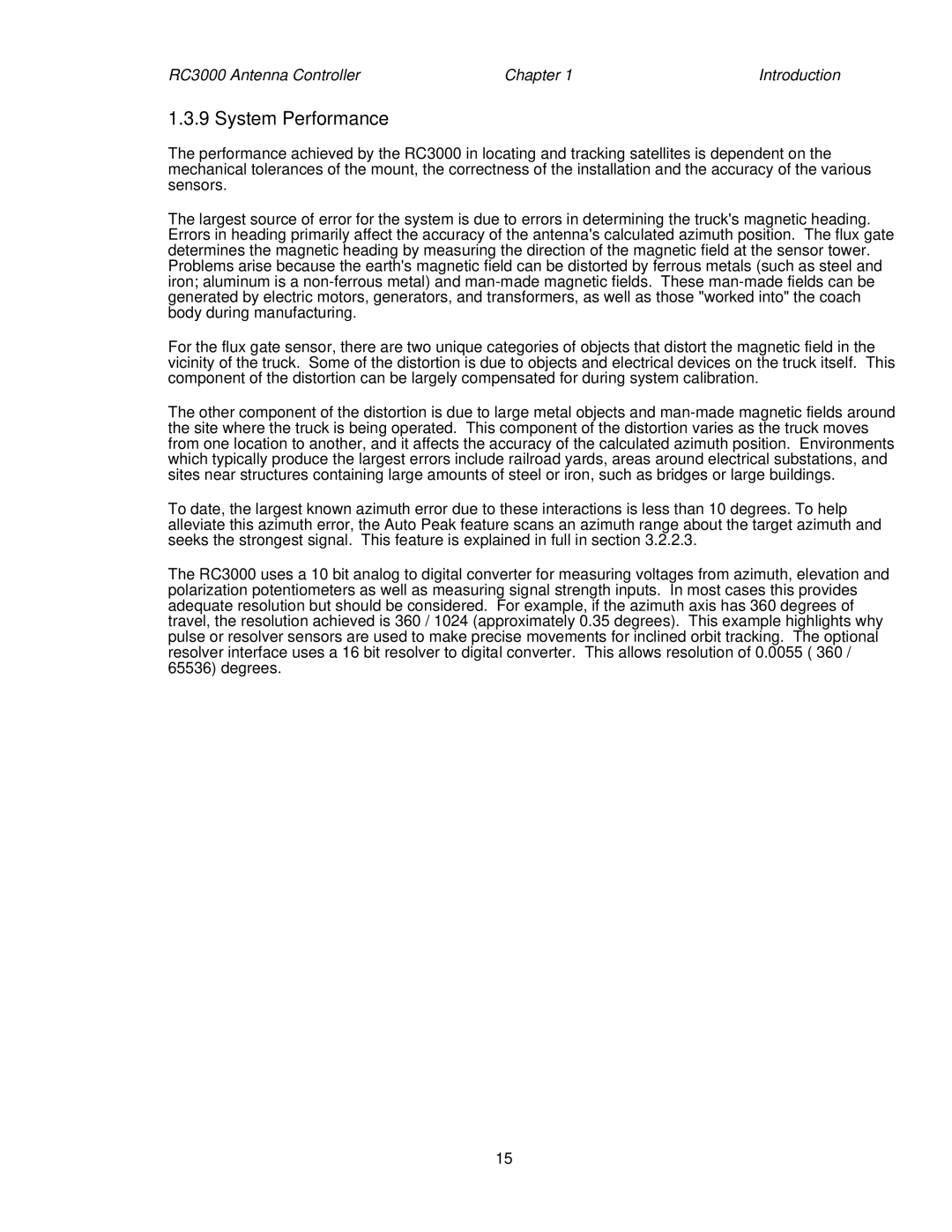RC3000 Antenna Controller | Chapter 1 | Introduction |
1.3.9 System Performance
The performance achieved by the RC3000 in locating and tracking satellites is dependent on the mechanical tolerances of the mount, the correctness of the installation and the accuracy of the various sensors.
The largest source of error for the system is due to errors in determining the truck's magnetic heading. Errors in heading primarily affect the accuracy of the antenna's calculated azimuth position. The flux gate determines the magnetic heading by measuring the direction of the magnetic field at the sensor tower. Problems arise because the earth's magnetic field can be distorted by ferrous metals (such as steel and iron; aluminum is a
For the flux gate sensor, there are two unique categories of objects that distort the magnetic field in the vicinity of the truck. Some of the distortion is due to objects and electrical devices on the truck itself. This component of the distortion can be largely compensated for during system calibration.
The other component of the distortion is due to large metal objects and
To date, the largest known azimuth error due to these interactions is less than 10 degrees. To help alleviate this azimuth error, the Auto Peak feature scans an azimuth range about the target azimuth and seeks the strongest signal. This feature is explained in full in section 3.2.2.3.
The RC3000 uses a 10 bit analog to digital converter for measuring voltages from azimuth, elevation and polarization potentiometers as well as measuring signal strength inputs. In most cases this provides adequate resolution but should be considered. For example, if the azimuth axis has 360 degrees of travel, the resolution achieved is 360 / 1024 (approximately 0.35 degrees). This example highlights why pulse or resolver sensors are used to make precise movements for inclined orbit tracking. The optional resolver interface uses a 16 bit resolver to digital converter. This allows resolution of 0.0055 ( 360 / 65536) degrees.
15
